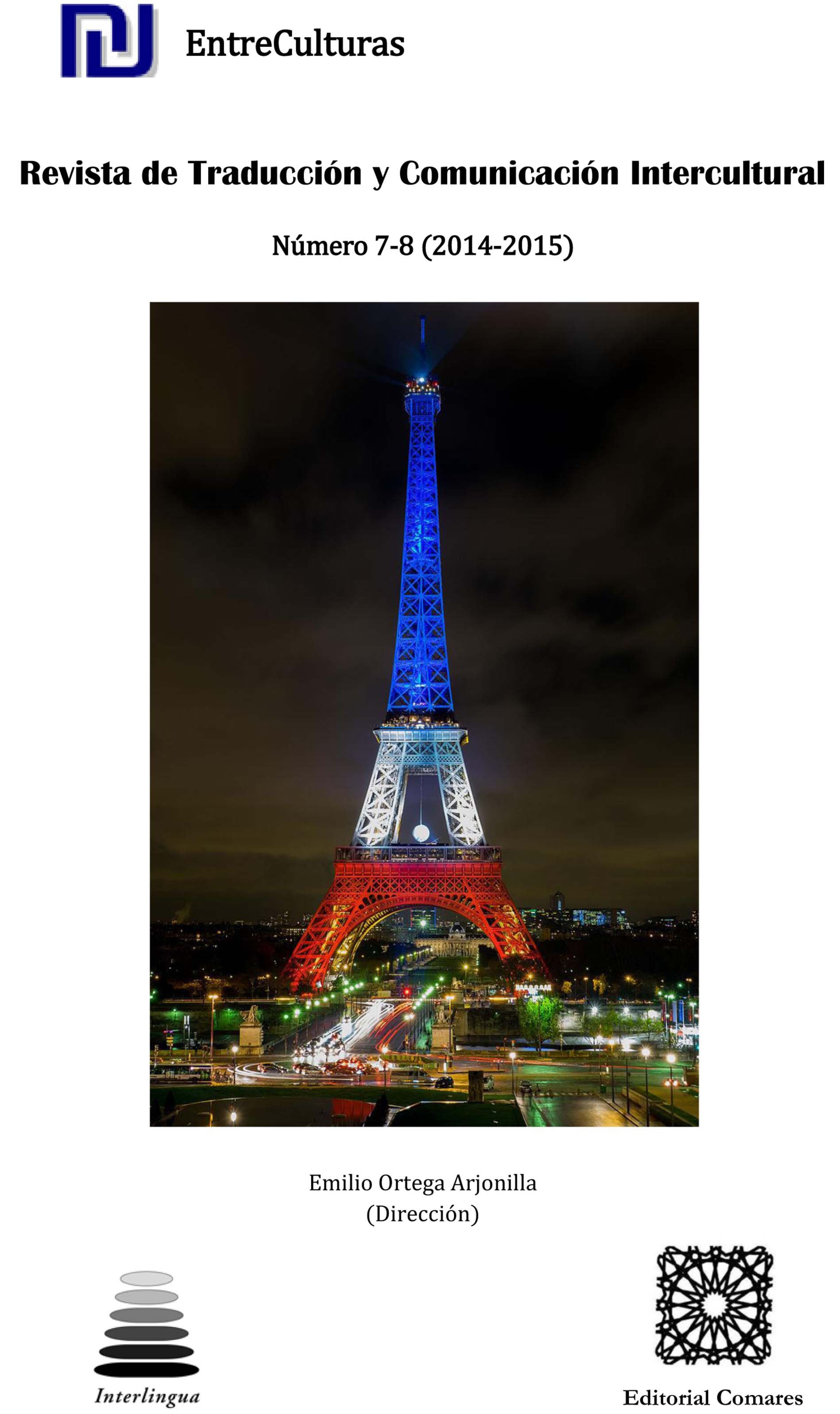EL ANTAGONISMO INTERCULTURAL ENTRE ESPAÑA Y ESTADOS UNIDOS: LA MASCULINIDAD EN TRES NOVELAS DE ANTONIO MUÑOZ MOLINA
DOI:
https://doi.org/10.24310/Entreculturasertci.vi7-8.11327Keywords:
Antonio Muñoz Molina, masculinity/femininity, Spain versus United States, imagology, empirical intercultural modelsAbstract
Antonio Muñoz Molina’s narrative repeatedly shows an antagonism between Spain and the United States that relates to ‘masculinity’, one of the fundamental concepts of Hofstede’s intercultural model. In three of his novels, the author particularly elaborates the different positions both countries take towards the binomial ‘masculinity/femininity’ by means of some of the imagologic strategies outlined by Pageaux. More specifically, lexical opposition, hierarchy of characters and stereotyping at the scenario level put forward the protagonists’ ambivalent attitude towards masculinity, this way illustrating the synergy between empirical intercultural studies and a constructivist imagologic viewpoint as formulated by Leerssen.
Downloads
Metrics
References
Bertrand de Muñoz, Maryse (1994). “Antonio Muñoz Molina and the Myth of Spanish Civil War”, Revista Canadiense de Estudios Hispánicos, 18: 3, 427-437.
Dufays, Jean-Louis (1994). Stéréotype et lecture. Liège, Pierre Mardaga.
Hofstede, Geert (2005). Cultures and Organizations. Software of the mind. London, Mc Graw-Hill.
Leerssen, Joep T. (2007). “Imagology: History and Method”, en: Beller Manfred y Leerssen, Joep [eds.], Imagology: The Cultural Construction and Literary Representation of National Characters. A Critical Survey, Amsterdam/New York, Rodopi, pp. 17-32.
Muñoz Molina, Antonio (1991). El jinete polaco. Barcelona, Planeta.
----- (1992). Los misterios de Madrid. Barcelona, Seix Barral.
----- (2001). Sefarad. Barcelona, Seix Barral.
----- (2004). Ventanas de Manhattan. Barcelona, Seix Barral.
----- (1999/2008). Carlota Fainberg. Madrid, Santillana.
----- (2009). La noche de los tiempos. Barcelona, Seix Barral.
----- (2013). Todo lo que era sólido. Barcelona, Seix Barral.
Navarro Gil, Sandra (2005). “La construcción de los personajes en ‘Carlota Fainberg’ de Antonio Muñoz Molina”, Espéculo. Revista de estudios literarios, 29, 1-11. http://www.ucm.es/info/especulo/numero29/carlotaf.html
Pageaux, Daniel-Henri (1995). « Recherche sur l’imagologie: de l’Histoire culturelle à la Poétique », Revista de Filología Francesa, 8, 135-160.
Renkema, Jan (2004). Introduction to discourse studies. Amsterdam/Philadelphia, John Benjamins.
Simões, Maria João (2009). Novos Veios da Literatura Comparada: Imagologia e estereotipos em Le Clézio, Lídia Jorge e Fay Weldon. VI Congresso Nacional Associação Portuguesa de Literatura Comparada/X Colóquio de Outono das Vanguardas. Universidade do Minho.
Snauwaert, Erwin (2012). “Enseñar la competencia intercultural a través de la literatura: el individualismo como regulador del diálogo en el mundo hispanohablante en las crónicas de Alfredo Bryce Echenique”, Foro Hispánico, 44, 315-330.
Van Doorslaer, Luc (2013). “National and cultural images”, en Gambier, Yves y Van Doorslaer, Luc [eds.], Handbook of Translation Studies 4, Amsterdam, John Benjamins, pp. 122-127.
Wall, David (2008). “It Is and It Isn’t: Stereotypes, Advertising and Narrative”, The Journal of Popular Culture, 41:6, 1033-1050.
Downloads
Published
How to Cite
Issue
Section
License
All contents published in Entre culturas. Revista de traducción y comunicación intercultural are protected under the Creative Commons Attribution-NonCommercial-ShareAlike 4.0 International (CC BY-NC-SA 4.0) license. All about this license is available in the following link: <http://creativecommons.org/licenses/by-nc-sa/4.0>
Users can copy, use, redistribute, share and exhibit publicly as long as:
- The original source and authorship of the material are cited (Journal, Publisher and URL of the work).
- It is not used for comercial purposes.
- The existence of the license and its especifications are mentioned.
There are two sets of authors’ rights: moral and property rights. Moral rights are perpetual prerogatives, unrenounceable, not-transferable, unalienable, imprescriptible and inembargable. According to authors’ rights legislation, Entreculturas. Revista de traducción y comunicación intercultural recognizes and respects authors moral rights, as well as the ownership of property rights, which will be transferred to University of Malaga in open access. The property rights are referred to the benefits that are gained by the use or the dissemination of works. Entreculturas. Revista de traducción y comunicación intercultural is published in an open access form and it is exclusively licenced by any means for doing or authorising distribution, dissemination, reproduction, , adaptation, translation or arrangement of works.
Authors are responsable for obtaining the necessary permission to use copyrighted images.





7.png)
